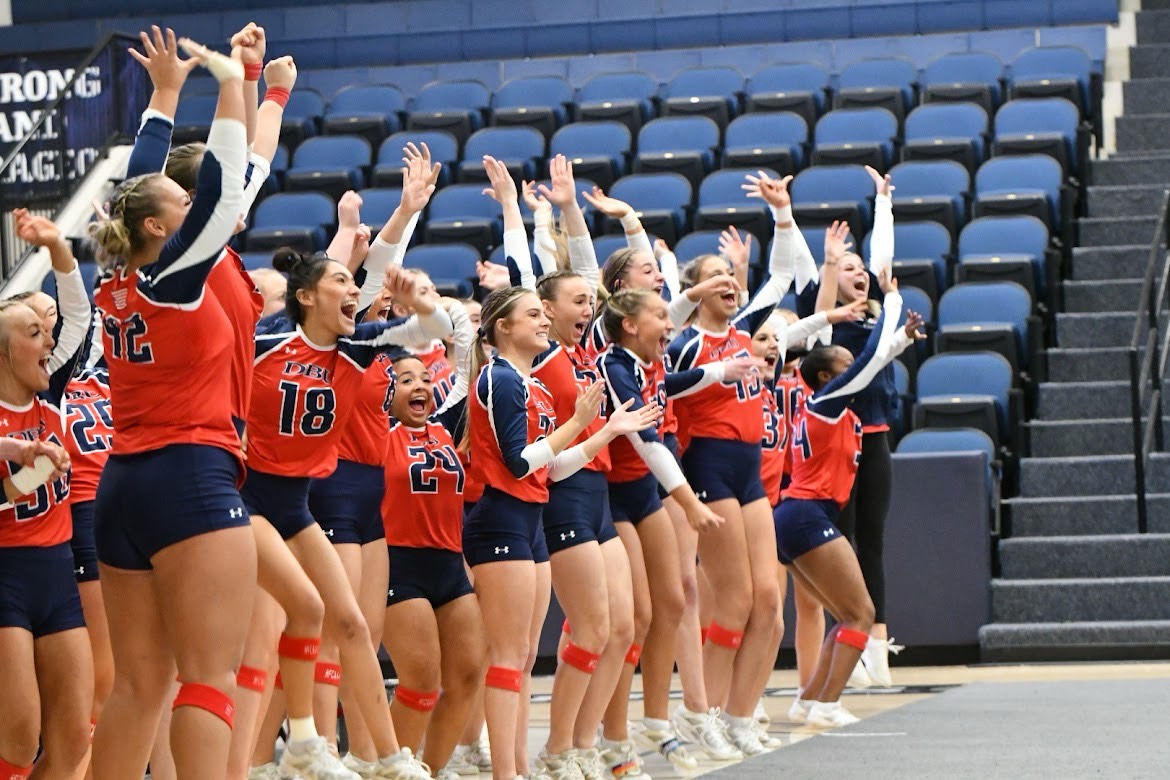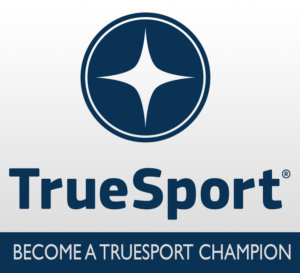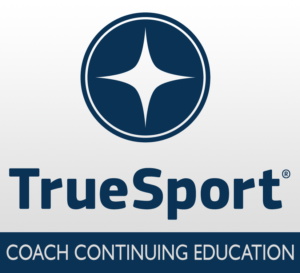4 Ways Athletes Should Be Using Sugar for Fuel
USA Cheer has partnered with TrueSport, to provide new educational tools to equip coaches, parents and young athletes with the resources to build life skills and core values for success in sports and in life. TrueSport, a movement by the U.S. Anti-Doping Agency, inspires athletes, coaches, parents, and administrators to change the culture of youth sport through active engagement and thoughtful curriculum based on cornerstone lessons of sportsmanship, character-building, and clean and healthy performance, while also creating leaders across communities through sport.
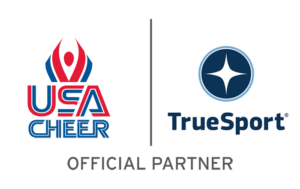
4 Ways Athletes Should Be Using Sugar for Fuel
Is sugar ever good for you? You may have heard that sugar is bad and should be avoided, but for athletes in particular, this is absolutely not the case. Here, TrueSport Expert Stephanie Miezin, MS, RD, CSSD, the Director of Nutrition for the NWSL team, KC Current, destigmatizes sugar and shares the four ways athletes should be using sugar for fuel: before, during, and after exercise, and as a fun treat (in moderation).

TrueSport Expert Stephanie Miezin, MS, RD, CSSD
The difference between sugar and carbohydrates
A lot of athletes and coaches become confused about the difference between carbohydrates and sugar, because often the two are used interchangeably. Sugars are always carbohydrates, but carbohydrates can be simple or complex, and can contain starch and fiber in addition to sugar. Sugar is a simple carbohydrate because of its size, and therefore, it can be quickly processed into energy in the body. The more complex the carbohydrate the longer it takes the body to convert it into energy.
“The longer or more complex the chain of carbohydrate, the closer we are to fiber, and the shorter the chain, the closer we are to sugars,” says Miezin. “I think that’s a nice way to think about it because it objectifies sugar rather than assigning it a good or bad connotation.”
The problem with demonizing sugar
“Yes, there are associations in the general population research where we see higher added sugar intake associated with poor health outcomes or weight gain over time,” says Miezin. “However, these are general population studies, and it’s a big leap to say that young athletes should never have any sugar at any time. Sports nutrition and nutrition for athletes is a very specific context, and we know that many of our general nutrition recommendations do not always directly translate over to sport nutrition.”
As Miezin noted, sugar is simply a type of carbohydrate and isn’t inherently good or bad. “Typically, sugar is an evil word in the world,” she says. “But guess what the body breaks all digestible carbohydrates down into? Sugar. For example, we might think about a potato as complex carbohydrates and pieces of candy as a source of simple sugar. But at the end of the day, both of those are going to turn into glucose in the body. That is how the body can transform these foods into usable energy.”
Carbohydrates—yes, including sugar—also seem to play an important role in the prevention of Relative Energy Deficiency in Sport (RED-S). “What we are seeing is the association with low carbohydrate availability, perhaps even in the absence of low energy availability, and how it might lead to some of these similar symptoms. Yes, choosing more nutrient dense sources of carbohydrate should be the main source of carbohydrate-rich diets. But that said, there can absolutely be a time and a place for sugar in an athlete’s diet.”
Recognize sources of added sugar
While sugar isn’t bad, it is a good idea to know when you’re eating it. There are often surprising amounts of hidden sugars in everyday meals and foods, especially pre-prepared or ultra-processed ones. Even though sugar can be beneficial for an athlete who needs quick energy or needs to begin the muscle repair process, it is still possible to overdo simple sugars, and in doing so, skimp on more nutrient dense meals. So, added sugars in processed and ultra-processed foods are worth paying attention to—but not avoiding entirely.
“When we’re looking at nutrition labels, the ‘Added Sugar’ is something to look at,” says Miezin. “Added sugar means that the food or beverage has an addition of a sugar, whether that’s simple table sugar, honey, maple syrup, or any sort of syrup or fruit juice concentrate. These are not inherently bad, but we should pay attention to them.”
However, it’s also important to remember that a claim of “no added sugar” doesn’t automatically mean that something has no sugar—it just means that none has been additionally added, but it may still contain sugar. A good example is milk, which according to the nutrition facts panel usually has 12 grams of ‘Total Sugars’ but 0 grams of ‘Added Sugars.’ Cow’s milk naturally contains a simple type of carbohydrate, or a sugar, we know as lactose. Miezin advises not to worry about these naturally occurring sugars. “Research shows that naturally occurring sugars, like in milk, are not associated with increased health risks like added sugars can be,” she says.
Miezin adds that paying attention to labels is a good practice to better understand added sugar content, but she doesn’t advocate for counting or tracking grams of sugar or calories, especially for young athletes.

When athletes need sugar
There are four key times an athlete may benefit from sugar to perform at their best: before, during, and after exercise, but also simply as a fun treat anytime, in moderation.
“Sugar is a great energy source before, during, and after a workout, because we know this type of carbohydrate is quickly digested and is easier on the stomach,” says Miezin. “That means we’re going to get quicker energy, which leads to more fuel in the system working to refuel the muscles.”
1. BEFORE
The amounts that an athlete can tolerate before, during, and after exercise can differ greatly between individuals. Before workouts, one general recommendation is roughly one gram of carbohydrate per kilogram of body weight if eating an hour before a workout. So, if an athlete is 130 pounds, or 59 kilograms, then they would want to have approximately 59 grams of carbs that sit well in the stomach for that individual. This could be achieved with a large banana and a packet of fruit snacks, 2 oz. of pretzels and 12 oz. of a traditional sports drink (with carbs), or a granola bar and a cup of juice. Some of those foods contain added sugars, which helps to meet carbohydrate needs for quick fueling without requiring large amounts of food to be consumed prior to exercise.
2. DURING
During a workout that lasts around an hour or more, consuming carbohydrates by quickly digesting sugars in the form of a sports drink or fruit gummies (with water) ‘recharges’ muscles to support continued high performance.
3. AFTER
To jump start the muscle recovery process, it is recommended to consume 1 gram of carbohydrates per kilogram of body weight within an hour of finishing exercise, training, or competition. Quickly digesting carbohydrates, like sugars, can help meet these energy needs while being easy on the stomach, which can be especially important for many athletes who don’t have much appetite after exercise. The above examples for before-exercise fueling would work for after-exercise recovery as well. Or it would be a great time for chocolate milk, which contains added sugars and can provide close to our example of 59 grams of carbohydrates in 2 cups.
4. ANY TIME IN MODERATION
It’s important to understand that creating restrictions and timelines around when an athlete can have simple sugar can lead to restrictive eating patterns that are ultimately unhealthy.
As a coach, your words matter, and it’s easy to accidentally say something negative about sugary foods in a casual conversation. That off-the-cuff comment can have a major impact on an athlete’s perspective around nutrition. For instance, if you say that sugar is only good during exercise or that during the competition season, your athletes should be skipping dessert, you’re creating a black-and-white set of rules about nutrition that aren’t entirely accurate, and can lead to an athlete overly restricting their caloric intake.
“I don’t want athletes to think that they should only have added sugar foods around exercise,” says Miezin. “It’s good to think about that as the priority time to have sugar because it’s when we can really leverage the benefit of sugar, but I want young athletes to have that dessert when they want it. That is really important for an athlete’s relationship with food and positive eating behaviors. There shouldn’t be a time when sugar is off-limits.”
In fact, some athletes may need that sugar-rich snack during the day in order to satisfy their caloric needs, especially if that athlete has two-a-day practices or an intense training schedule.
You can help your athletes improve their nutrition by sharing information like the Balanced Athlete Plate infographics that help them visualize what a meal should contain. “We do want to be getting most of our energy from nutrient-rich whole food sources,” adds Miezin.
Takeaway 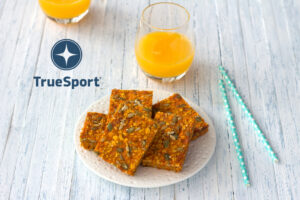
Sugar plays an important role in an athlete’s fueling and should never be considered off-limits. While other forms of carbohydrates (such as complex carbs and fiber) should be rich in an athlete’s diet, sugar is particularly useful before, during, and after a workout. And for athletes who are constantly burning energy, eating sweet treats is absolutely part of a balanced diet that supports both their health and performance.
What is TrueSport?
The TrueSport Champion Network is a community of coaches, parents, program directors, and athletes who believe in the power of youth sport to build life skills and core values for success both on and off the field. Join TrueSport Champion Network to help promote the positive values of cheer, dance, and STUNT!
The TrueSport Coaching Education Program empowers coaches—the most significant influencers in young athletes’ lives—with a transformative learning opportunity to obtain the knowledge and resources to cultivate, champion, and uphold the rich promise and highest potential of sport.
Additional Training Modules from TrueSport
USA Cheer is proud to partner with USADA’s TrueSport® to bring relevant educational content to the Cheer and STUNT community in order to promote a positive youth sport experience. We are excited to provide access to TrueSport’s experts that take coaching beyond skills and help truly develop the overall athlete by building life skills and core values for success on and off the mat, sideline, field, and court.
Feel free to share these resources with your coaching staff, parents, or athletes!
About TrueSport
TrueSport®, a movement powered by the experience and values of the U.S. Anti-Doping Agency, champions the positive values and life lessons learned through youth sport. TrueSport inspires athletes, coaches, parents, and administrators to change the culture of youth sport through active engagement and thoughtful curriculum based on cornerstone lessons of sportsmanship, character-building, and clean and healthy performance, while also creating leaders across communities through sport.
For more expert-driven articles and materials, visit TrueSport’s comprehensive library of resources.
This content was reproduced in partnership with TrueSport. Any content copied or reproduced without TrueSport and the U.S. Anti-Doping Agency’s express written permission would be in violation of our copyright, and subject to legal recourse. To learn more or request permission to reproduce content, click here.


